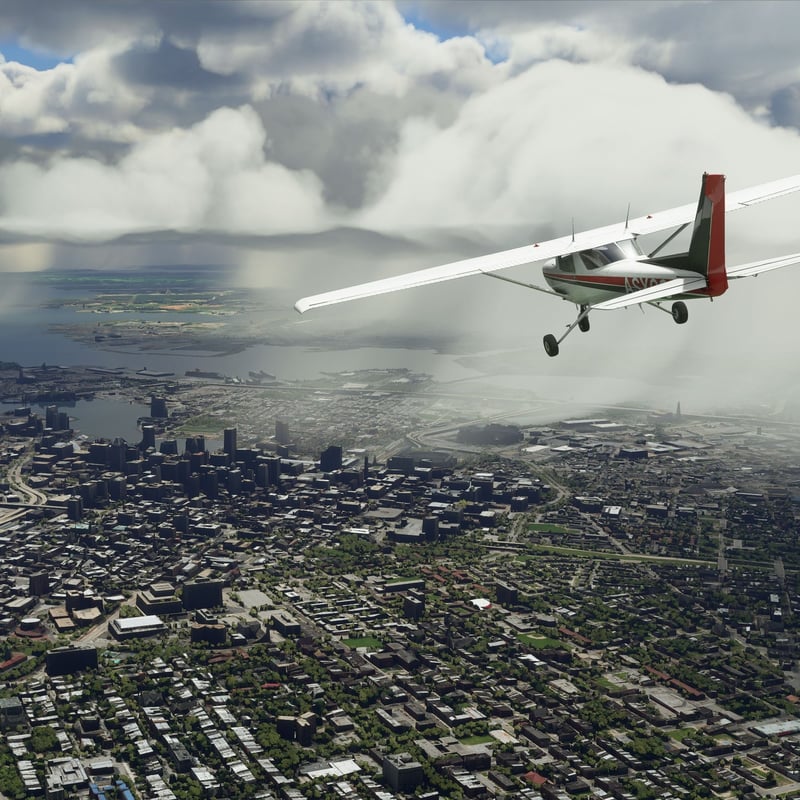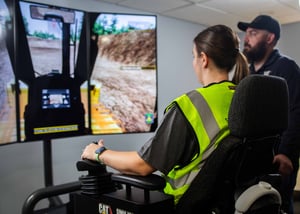After surviving a crash, Heini Sauter sought a new way to connect himself to the world of aviation.

CONTEXT: A STRONGER INTEREST IN FLIGHT
As a former training strategist with the Swiss Air Force School for professional military pilots, Heini Sauter was, by his own account, no expert in the intricacies of actual flight. After all, he was responsible for teaching trainers how to teach pilots so his expertise was in learning methodology, didactics and strategies.
But his interest in flight took on a whole new dimension one fateful Sunday afternoon in October 1982 when the Boeing 707 he was a passenger in crashed. Rather than scaring him from ever flying again, the accident sparked an interest in flight that took an interesting turn.
After getting his hands on the accident report, Sauter studied every inch of the document to learn more. “I wanted to know as much as I possibly could about flying,” says Sauter.
CHALLENGE: MAKE THE MOST OF SIMULATION
As luck would have it, flight simulators for home computers were introduced at about the same time, feeding Sauter’s growing fascination with all things aviation. Sensing that there was more to flight simulation than the limitations the software could provide, he started sourcing actual parts online eventually building his very own full-fledged simulator.
For him, the simulator was a way to experience the thrill of flight without actually being in the air. “I don’t want to fly’” explains Sauter. “I couldn’t do that to my wife. After what happened, she’d be too worried.”
With no expense spared in the development phase, every switch and instrument is in the exact same place as the cockpit of a real Boeing 737-800. Four large screens provide a realistic view from the cockpit, adding to the surreal experience of flying all over the globe. “Thanks to today’s software, you can approach almost every airport in the world,” said Sauter.
SOLUTION: D-BOX MOTION THAT GOES A STEP BEYOND
To create the realism he wanted, Sauter knew motion had to be a part of the equation.
“I did a lot of research online and found a man in Switzerland who was talking about the advantages of D-BOX. I was intrigued so I contacted him and ordered the D-BOX actuators right away.”
Heini Sauter
Because Sauter had built the simulator in his home, as opposed to a large hanger, he worried about whether or not the system would actually fit in his basement. “Thankfully, I was able to construct the motion platform in the room and still accommodate the extra height with the 4 actuators from D-BOX.”
RESULTS: AN UNEQUALLED SENSE OF FLYING
Flying the simulator with the D-BOX motion system gives the 71-year old retired training strategist an unequalled sense of flying.
“When I land on the ground, I can feel all the bumps and textures as if I were landing an actual airplane. But the real thrill is the sensation of speed that D-BOX gives me when I take off. The heave when I lift into the air is totally realistic. And the fact that you can feel the weather conditions is also very impressive. There’s nothing like it.”
Heini Sauter
As for technical glitches, Sauter says they’ve been non-existent. “I have had more problems with the fuses and overhead panels,” joked Sauter. “The D-BOX actuators have been problem-free for me. And the integration was easy. I’m really happy with it.”
Of course, once word got out that there was a full-sized simulator in the neighbourhood, it became somewhat of an attraction. “Ever since I was featured in a newspaper article, people have been contacting me, asking questions and wondering if they can come and try it out,” said Sauter. And he’s all too happy to accommodate them. “I just want them to enjoy a realistic flying experience,” he said.

